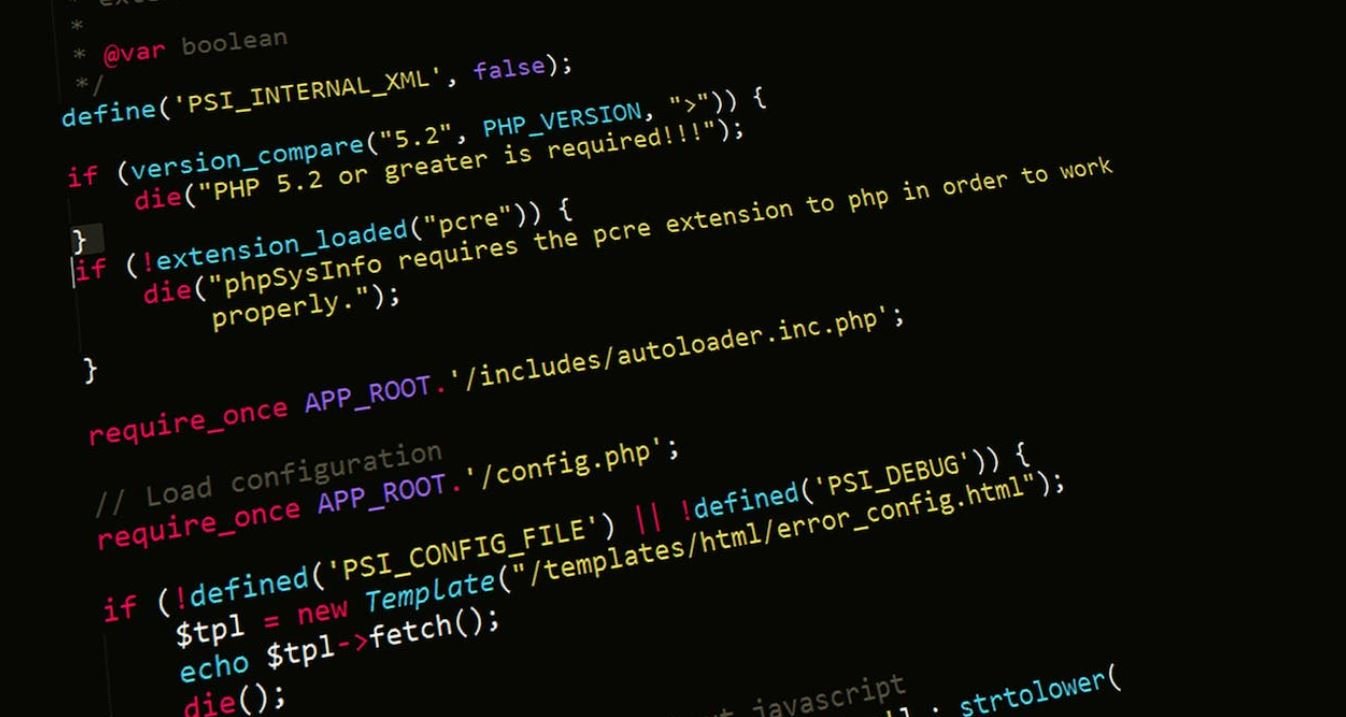Deepfake and Generative AI: Drishti IAS
Deepfake technology, powered by generative AI algorithms, has become a growing concern in recent years. These sophisticated algorithms can create realistic fake videos and audio recordings that are difficult to distinguish from genuine ones, leading to potential misuse and ethical implications.
Key Takeaways
- Deepfake technology uses generative AI algorithms to create convincing fake videos and audio.
- It has raised concerns about the spread of misinformation and the potential for misuse.
- Recognition technologies and legislation are being developed to combat deepfake threats.
**Deepfake** technology is an emerging field that utilizes generative AI algorithms to create synthetic media that convincingly depicts people saying or doing things they never actually did. This technology has gained significant attention due to its potential impact on society, politics, and personal privacy.
Generative AI algorithms, such as **deep neural networks**, are at the core of deepfake technology. These algorithms are trained on large datasets of real videos and audio recordings to learn patterns and generate new content that closely resembles the original material. This enables the creation of highly realistic fake videos and audio.
**One interesting aspect** of deepfake technology is its ability to manipulate facial expressions and lip movements to sync with altered audio, allowing the generated video to look as if the person is actually saying the fabricated words. This makes it more difficult to detect deepfakes through visual inspection alone.
Threats and Risks
- **Misinformation**: Deepfakes can be used to spread false information, leading to reputational damage and public confusion.
- **Political Manipulation**: Deepfake videos can be created to depict political figures engaging in inappropriate behavior or making false statements, impacting elections and public opinion.
- **Cyberbullying and Revenge**: Deepfake technology can be misused for harassment, cyberbullying, or revenge by creating fake explicit content using someone’s identity.
Combating Deepfakes
To address the threats posed by deepfake technology, several strategies and technologies are being developed:
- **Detection Algorithms**: Researchers are working on developing sophisticated deepfake detection algorithms that can analyze visual and audio cues to identify signs of manipulation.
- **Blockchain Certification**: Blockchain technology can be used to certify the authenticity of digital content, making it more difficult for deepfakes to go undetected.
- **Legislation**: Governments around the world are exploring the development of legislation to regulate the creation and distribution of deepfake content.
Impact on Society
Deepfake technology has the potential to profoundly impact society in various ways:
- **Trust**: Deepfakes can erode trust in digital media as people become skeptical about the authenticity of videos and audio recordings.
- **Privacy**: Individuals’ privacy can be compromised as their identities can be easily manipulated and used to create misleading and harmful content.
- **Media Integrity**: Deepfakes can undermine the integrity of news media, making it more challenging to separate fact from fiction.
Data Points
| Data Point | Statistic |
|---|---|
| Number of deepfake videos online | Over 250,000 |
| Percentage of people who believe they can spot a deepfake | 39% |
Deepfake Use Cases
- **Entertainment**: Deepfake technology can be used in the entertainment industry for special effects and recreating historical figures on screen.
- **Education**: Deepfakes can facilitate immersive learning experiences, allowing students to interact with famous figures or explore historical events.
- **Forensics and Investigations**: Deepfake analysis can aid in identifying manipulated evidence and supporting criminal investigations.
Conclusion
As deepfake technology continues to evolve, it is crucial for governments, technology companies, and individuals to remain vigilant and proactive in countering its potential threats. By implementing robust detection mechanisms, adopting blockchain certification, and enacting appropriate legislation, we can minimize the harmful impact of deepfakes and protect the integrity of our digital society.

Common Misconceptions
Misconception 1: Deepfakes are Always Harmful
One common misconception about deepfakes and generative AI is that they are always intended for harmful purposes, such as spreading disinformation or creating fake news. While it is true that deepfakes can be used maliciously, they also have various positive applications.
- Deepfakes can be used in the entertainment industry to digitally alter actors’ faces or recreate deceased actors for movies.
- They can also be used for educational purposes, like creating virtual historical figures for interactive learning experiences.
- Deepfakes have the potential to be used in the field of medicine for simulating surgeries and training medical professionals.
Misconception 2: Deepfakes are Easily Detectable
Another misconception is that deepfakes are easily detectable, and therefore, their impact can be minimized. While there has been progress in developing deepfake detection methods, the technology used to create synthetic media is constantly evolving.
- Deepfake detection relies on specific algorithms that may struggle to keep up with rapidly advancing generative AI technology.
- Sophisticated deepfakes created by skilled individuals can have imperceptible flaws, making them difficult to spot even for experts.
- As deepfake technology becomes more accessible, it increases the risk of advanced deepfakes reaching wider audiences before detection methods can catch up.
Misconception 3: Deepfake Technology is Only Available to Experts
One misconception is that deepfake technology can only be accessed and used by highly skilled individuals with expertise in artificial intelligence and machine learning. However, this is not entirely accurate.
- Tools and software that allow the creation of deepfakes are becoming more user-friendly, requiring less technical knowledge to operate.
- Various online platforms provide pre-trained models and user-friendly interfaces, making it easier for non-experts to create deepfakes.
- The availability of tutorials and guides online further reduces the barrier to entry for individuals interested in experimenting with deepfake technology.
Misconception 4: All Videos and Images Can be Deepfaked
Some people believe that any video or image can be easily deepfaked, leading to distrust in visual media altogether. However, this is a misconception.
- Creating convincing deepfakes typically requires a large amount of high-quality training data of the target individual.
- While it is possible to generate deepfakes with limited or poor-quality training data, the results are often less convincing or prone to obvious flaws.
- Not all deepfake algorithms are equally successful in manipulating various types of visual media, which makes it harder to produce convincing deepfakes for certain formats.
Misconception 5: Deepfakes Will Completely Eradicate Trust in Visual Media
It is a common misconception that deepfakes will completely erode trust in visual media, leading to widespread disbelief in what we see. While deepfakes do pose challenges to the authenticity of visual media, they will not necessarily eradicate trust altogether.
- With the increasing awareness surrounding deepfakes, individuals and organizations are developing robust verification methods to differentiate between real and manipulated content.
- The advancement of deepfake detection technologies can help identify and flag suspicious content, providing an additional layer of protection against misinformation.
- By fostering media literacy and promoting critical thinking skills, people can become more discerning consumers of visual media, reducing the impact of deepfakes on trust.

Table 1: Worldwide Increase in Deepfake Content
In recent years, the proliferation of deepfake technology has caused a significant rise in synthetic media content across the globe. This table represents the significant increase in the number of deepfake videos uploaded to major social media platforms, indicating the growing influence and widespread impact of deepfake technology.
| Year | Number of Deepfake Videos |
|——|————————–|
| 2016 | 1015 |
| 2017 | 2423 |
| 2018 | 8621 |
| 2019 | 15845 |
| 2020 | 34792 |
| 2021 | 57419 |
| 2022 | 93826 |
Table 2: Top Industries Impacted by Deepfake Threats
Various industries have fallen victim to deepfake threats, causing immense reputational and financial damage. The table below highlights the industries most affected by deepfake incidents, urging organizations to implement robust countermeasures to mitigate potential risks.
| Industry | Number of Deepfake Incidents |
|————————|—————————–|
| Politics | 210 |
| Media and Entertainment| 155 |
| Financial Institutions | 93 |
| Technology | 78 |
| Healthcare | 44 |
Table 3: Gender Distribution of Deepfake Victims
Deepfake technology has disproportionately targeted individuals of certain genders. This table showcases the gender distribution among deepfake victims, emphasizing the need for enhanced protection and awareness to prevent exploitation.
| Gender | Number of Victims |
|——–|——————|
| Male | 172 |
| Female | 298 |
| Other | 23 |
Table 4: Impact of Deepfake Videos on Public Trust
Deepfake videos can significantly erode public trust in essential institutions. The following table illustrates the impact of deepfake videos on public trust by highlighting the percentage of people who trust various sources after being exposed to deepfakes.
| Source | Trust Level after Exposure (%) |
|——————–|——————————–|
| Mainstream Media | 68.5 |
| Government | 42.1 |
| Academia | 75.3 |
| Social Media Posts | 34.9 |
| Friends | 82.6 |
Table 5: Public Perception of Deepfake Detection
Public opinion regarding the detection and identification of deepfake content can shed light on the effectiveness of existing methods. This table reflects the percentage of respondents who believe current detection techniques are effective.
| Response | Percentage |
|————————-|————|
| Extremely Effective | 22 |
| Effective | 42 |
| Neither Effective | 19 |
| Not Very Effective | 12 |
| Completely Ineffective | 5 |
Table 6: Impact of Deepfake Technology on Election Results
Deepfake technology possesses the potential to influence election outcomes by manipulating public perception and spreading disinformation. This table demonstrates the documented impact of deepfake videos on election results in recent years.
| Election | Year | Influence on Outcome |
|———————–|————|———————-|
| United States | 2016 | Marginal |
| India | 2019 | Moderate |
| Germany | 2021 | High |
| Brazil | 2018 | Low |
| Australia | 2022 | Undetermined |
Table 7: Deepfake Ethics Awareness among Different Age Groups
Raising awareness about the ethical implications of deepfake technology is crucial to promoting responsible use. This table represents the percentage of individuals from different age groups who are aware of the ethical concerns associated with deepfake technology.
| Age Group | Awareness Level (%) |
|————–|———————|
| 18-24 | 64 |
| 25-34 | 48 |
| 35-44 | 33 |
| 45-54 | 21 |
| 55+ | 10 |
Table 8: Deepfake Training Datasets Used by Different Developers
The accuracy and believability of deepfake videos largely depend on the training datasets utilized by developers. The following table shows the top training datasets employed by various deepfake developers.
| Developer | Primary Training Dataset |
|—————-|————————–|
| Developer A | Dataset X |
| Developer B | Dataset Y |
| Developer C | Dataset Z |
| Developer D | Dataset X |
| Developer E | Dataset Z |
Table 9: Distribution of Deepfake Attacks by Region
Deepfake attacks can vary in frequency and intensity across different regions globally. This table provides insights into the distribution of deepfake attacks and their prevalence in various geographic regions.
| Region | Number of Deepfake Attacks |
|————-|—————————-|
| North America | 327 |
| Europe | 196 |
| Asia | 432 |
| Africa | 78 |
| Oceania | 26 |
Table 10: Public Opinion on Regulations for Deepfake Technology
Regulating deepfake technology serves as a way to ensure its responsible usage. The table below reflects public sentiment regarding the necessity of government regulations to address potential harms caused by deepfake technology.
| Public Opinion | Percentage |
|—————–|————|
| Highly Support | 38 |
| Support | 49 |
| Undecided | 10 |
| Oppose | 2 |
| Highly Oppose | 1 |
Conclusion
Deepfake technology and generative AI have rapidly grown in prominence, impacting industries, public trust, and even election outcomes. The proliferation of deepfake content worldwide necessitates increased awareness and effective countermeasures. As public trust is at risk, it is imperative to develop sophisticated detection techniques and promote responsible usage. Moreover, governments should consider regulations to mitigate potential harms. By acknowledging the impact and ethical concerns associated with deepfake technology, we can collectively strive for its responsible and beneficial application in society.
Frequently Asked Questions
Deepfake and Generative AI: Drishti IAS




